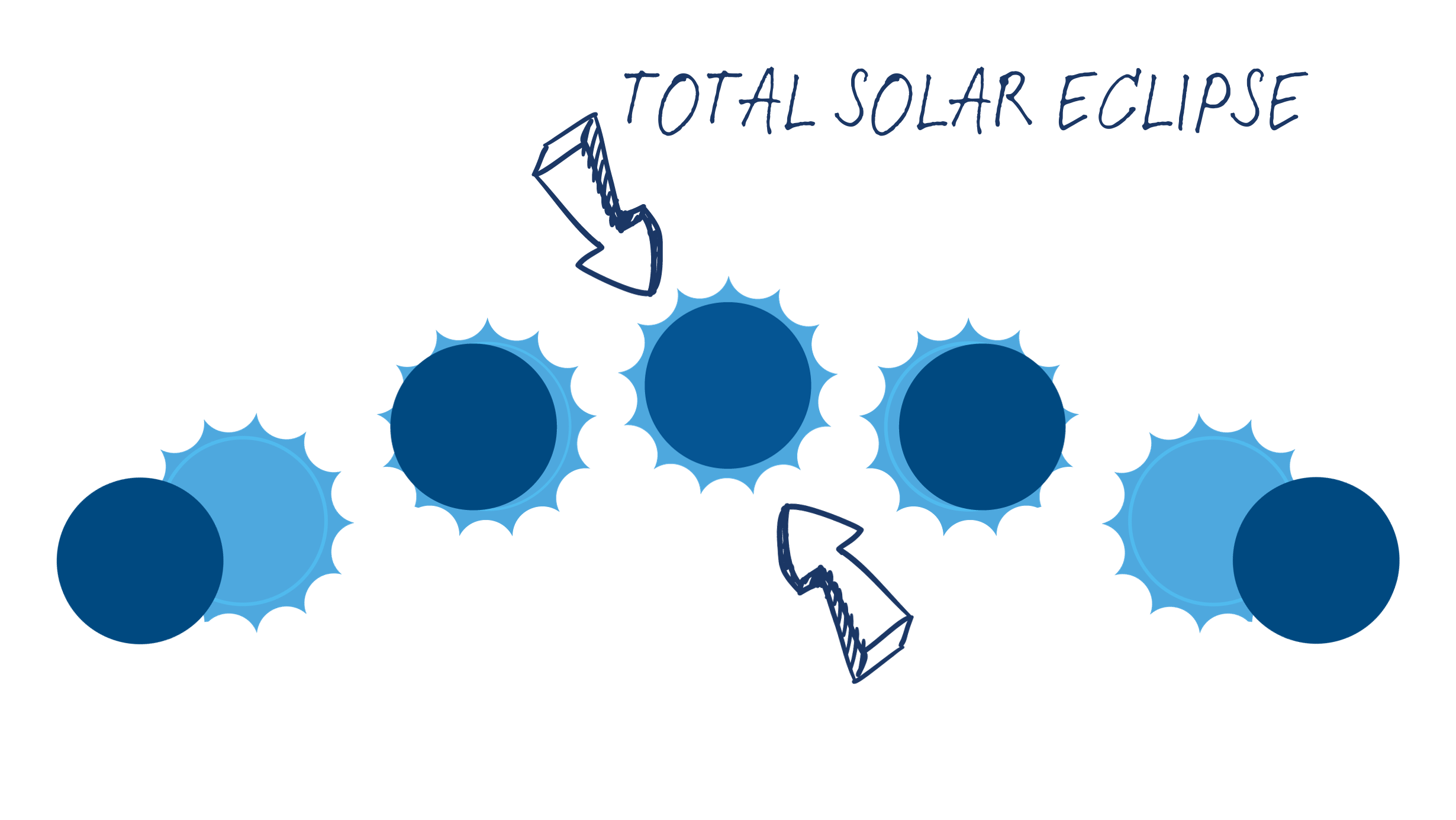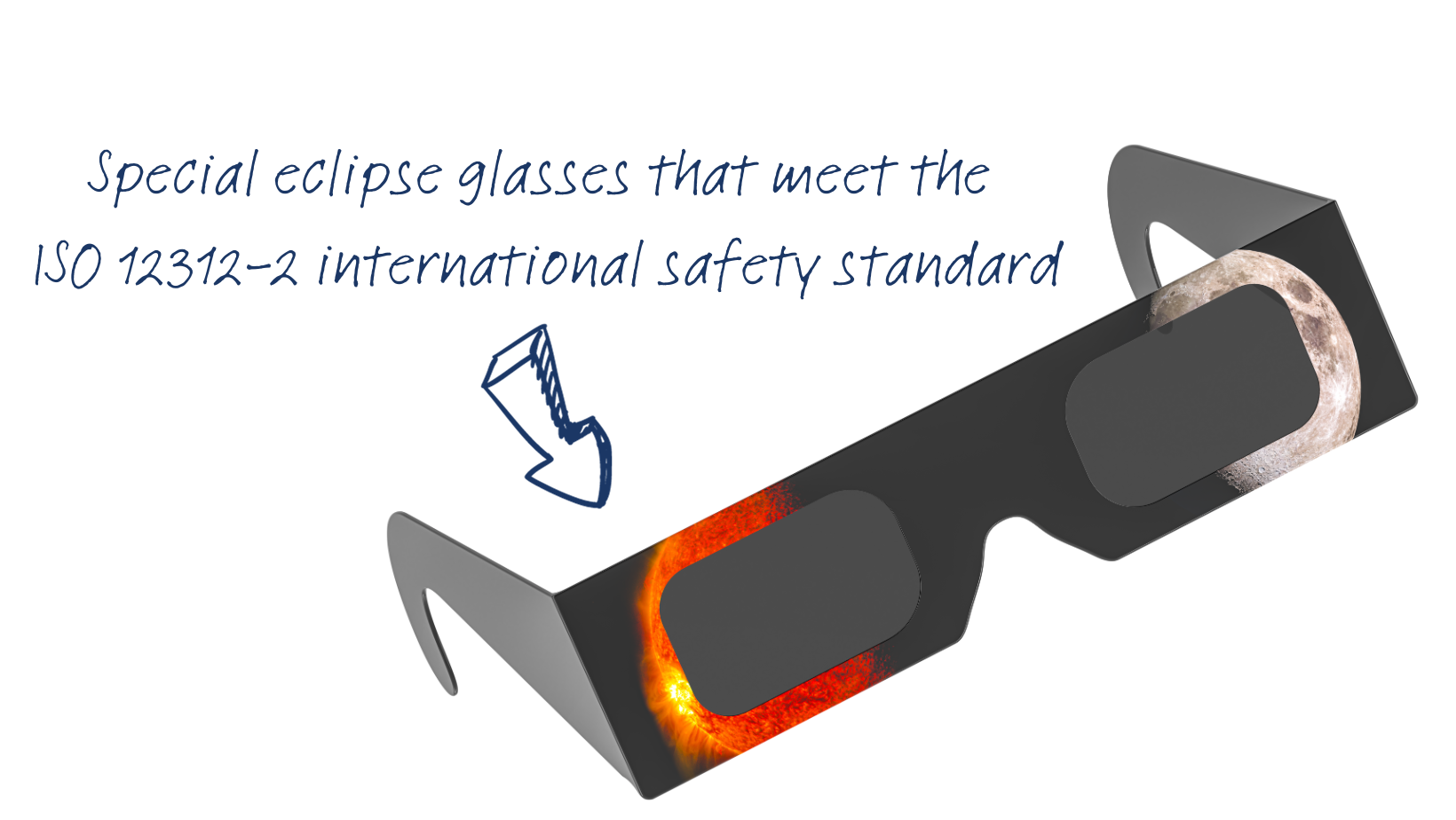What is a Total Solar Eclipse?
On April 8, 2024, something super cool is going to happen called a Total Solar Eclipse! This is when the moon moves in front of the sun, covering it up for a little while.
You might say, “But the sun is way bigger than the moon?” and to that, I would say, “You are right!” During this small period in time, the moon only looks bigger than the sun because of a thing called perspective – this is kind of like our mind thinking something is bigger than it is!


Total Solar Eclipses don’t happen very often. In fact, somewhere on Earth, a total solar eclipse happens about every 18 months. But for the same spot on Earth, like your hometown, it might only happen once every 360 to 410 years!
Why are Total Solar Eclipses Important?
Total solar eclipses are not only awesome to watch but also really important for scientists. They help them learn more about the sun and how it affects our planet. During an eclipse, scientists can study the sun’s atmosphere, called the corona, which is usually too bright to see. Understanding the sun better can teach us about space weather and how it affects things like GPS and satellites.
How to View a Total Solar Eclipse?
If you want to see the eclipse safely, you’ll need special glasses that protect your eyes. Regular sunglasses won’t work! These special glasses block out the harmful rays from the sun so you can look at it without hurting your eyes. Remember, never look directly at the sun without proper protection. You can purchase your glasses at the Don Harrington Discovery Center, your local science museum, or sometimes local grocery stores will have them closer to the special day.
You can also try to Make your own solar glasses – but please ask an adult and always test your glasses before using them to view the sun.


What will I see in Amarillo, Texas?
If you live in Amarillo, Texas, you’re in for a treat! While you won’t see the total eclipse like some other places, you’ll still get to see the moon cover part of the sun. It’ll be like a big bite taken out of a cookie! The eclipse will start around lunchtime and reach its peak later in the afternoon, so make sure to ask your parents or teachers if you can watch it safely.

Learn more about viewing the Total Solar Eclipse here
Fun solar eclipse activities to try at home:
- Make a Solar Eclipse Viewer: Create a simple pinhole projector or a DIY eclipse viewer using a cereal box or a cardboard tube. This will allow you to safely observe the eclipse by projecting an image of the sun onto a piece of paper. Here’s a step-by-step guide from NASA.
- Create Eclipse Art: Get creative and make eclipse-themed art! You can use black paper and chalk to draw the phases of the eclipse or try making a collage using pictures of the sun and moon. This activity can help visualize how the eclipse occurs and its different stages.
- Learn about Eclipse Science: Research the science behind solar eclipses. You can find age-appropriate videos or articles online that explain why eclipses happen, how they work, and what makes them so special. NASA’s website is a great resource for learning about solar eclipses.


